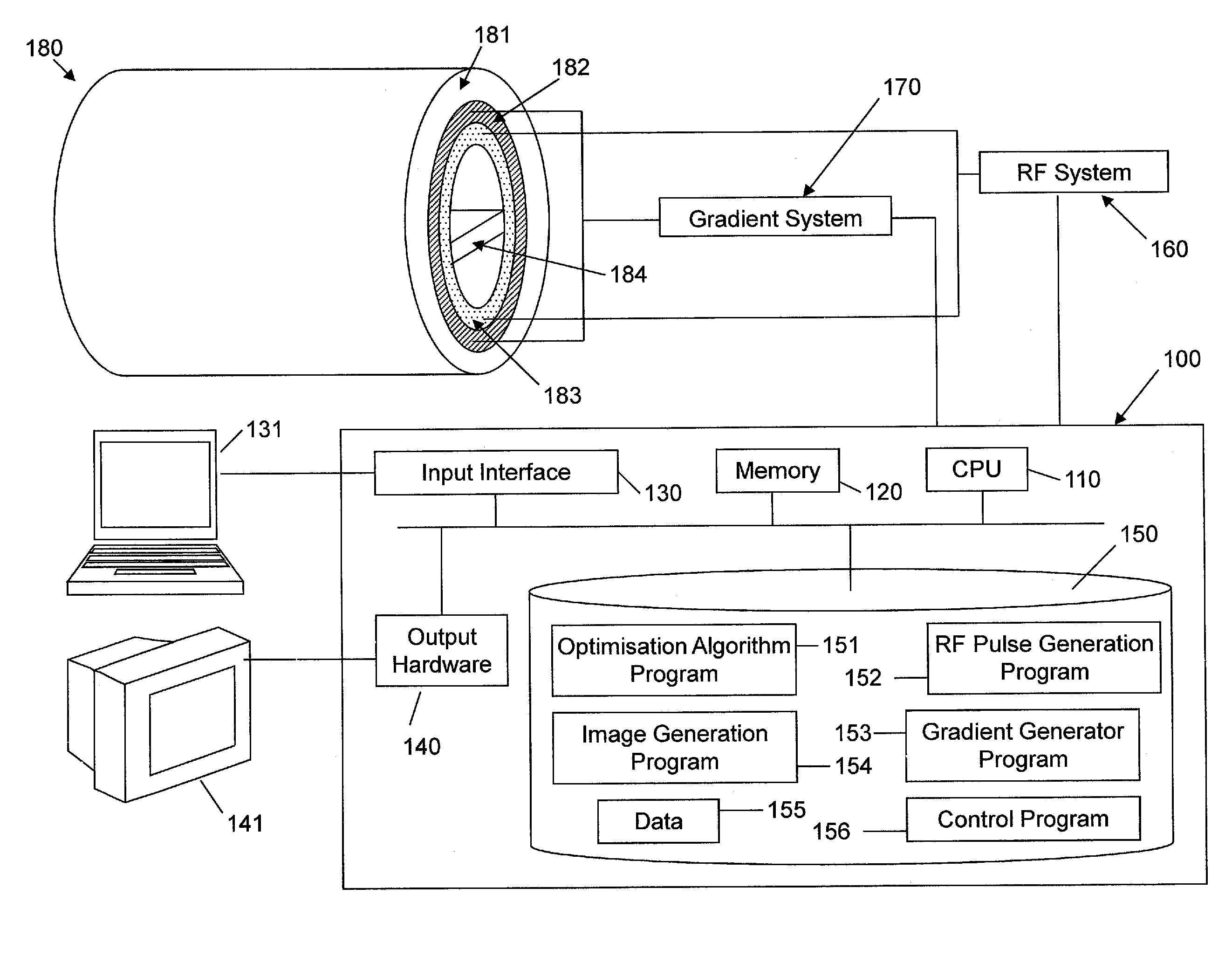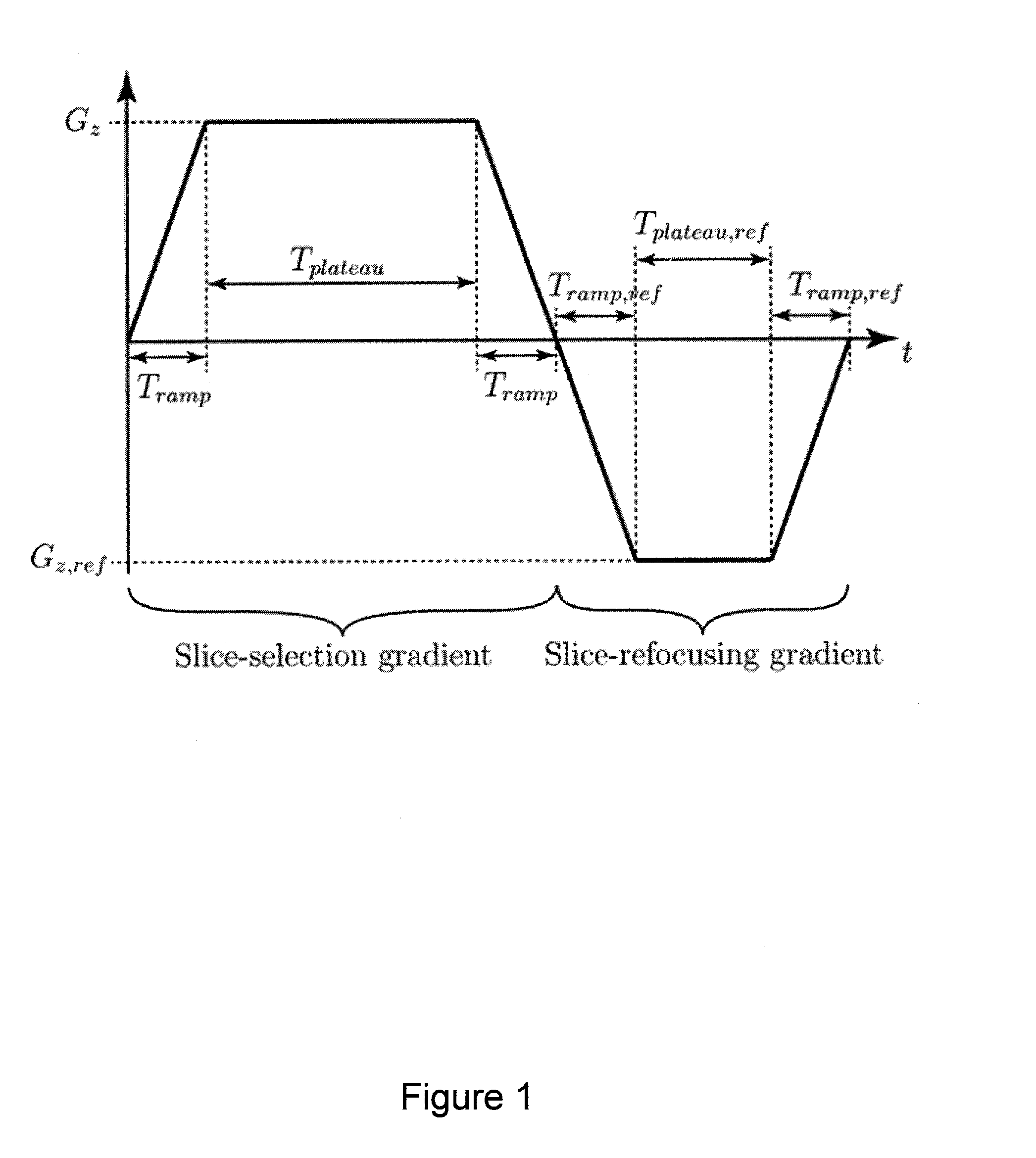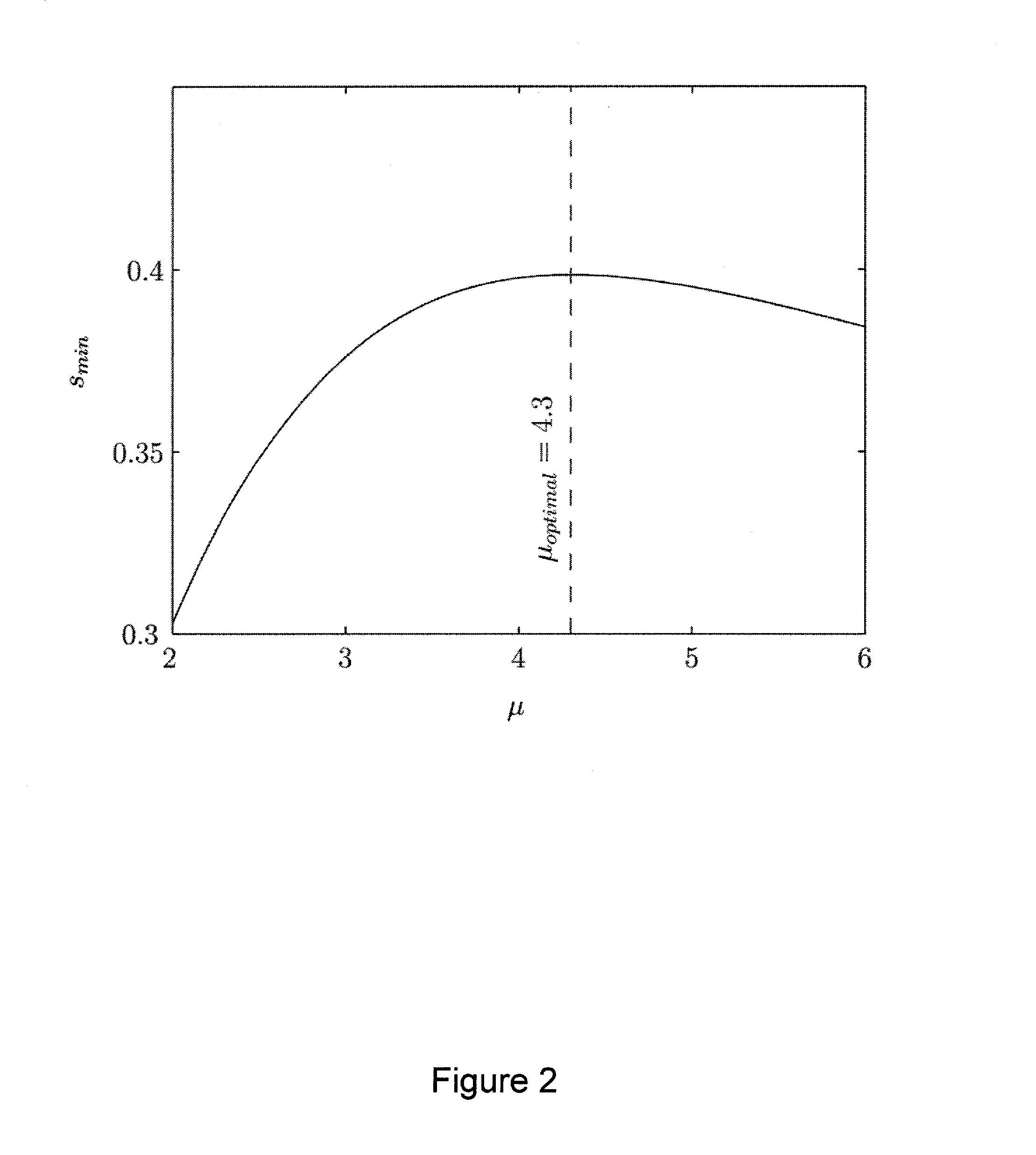RF pulses for magnetic resonance
a magnetic resonance and pulse technology, applied in the field of magnetic resonance imaging and magnetic resonance spectroscopy, can solve the problems of data being affected by signal dropout, particular problems such as signal dropout, and being unable to accurately be used, so as to and improve the detectability of an mr signal
- Summary
- Abstract
- Description
- Claims
- Application Information
AI Technical Summary
Benefits of technology
Problems solved by technology
Method used
Image
Examples
Embodiment Construction
Overview
[0041]The present invention provides an algorithm that determines the optimal parameters of an RF pulse that is to be applied to the RF coil of an MRI or MRS scanner, wherein the RF pulse is optimised for a specific object upon which the MRI or MRS scan is to be performed. Additionally, in the process of finding the optimised parameters of the RF pulse, the algorithm also determines the slice selection and slice refocusing gradients that correspond to the parameters of the RF pulse and that are to be applied to the gradient coils of the MRI or MRS scanner. The main objective of this algorithm is to reduce the problem of signal dropout caused by varying linear susceptibility gradient which are present in objects. The algorithm is able to determine the optimal parameters of the RF pulse and the accompanying slice selection and slice refocusing gradients which will reduce signal dropout caused by the range of magnetic susceptibility gradient present in a specific object.
[0042]T...
PUM
 Login to View More
Login to View More Abstract
Description
Claims
Application Information
 Login to View More
Login to View More - R&D
- Intellectual Property
- Life Sciences
- Materials
- Tech Scout
- Unparalleled Data Quality
- Higher Quality Content
- 60% Fewer Hallucinations
Browse by: Latest US Patents, China's latest patents, Technical Efficacy Thesaurus, Application Domain, Technology Topic, Popular Technical Reports.
© 2025 PatSnap. All rights reserved.Legal|Privacy policy|Modern Slavery Act Transparency Statement|Sitemap|About US| Contact US: help@patsnap.com



